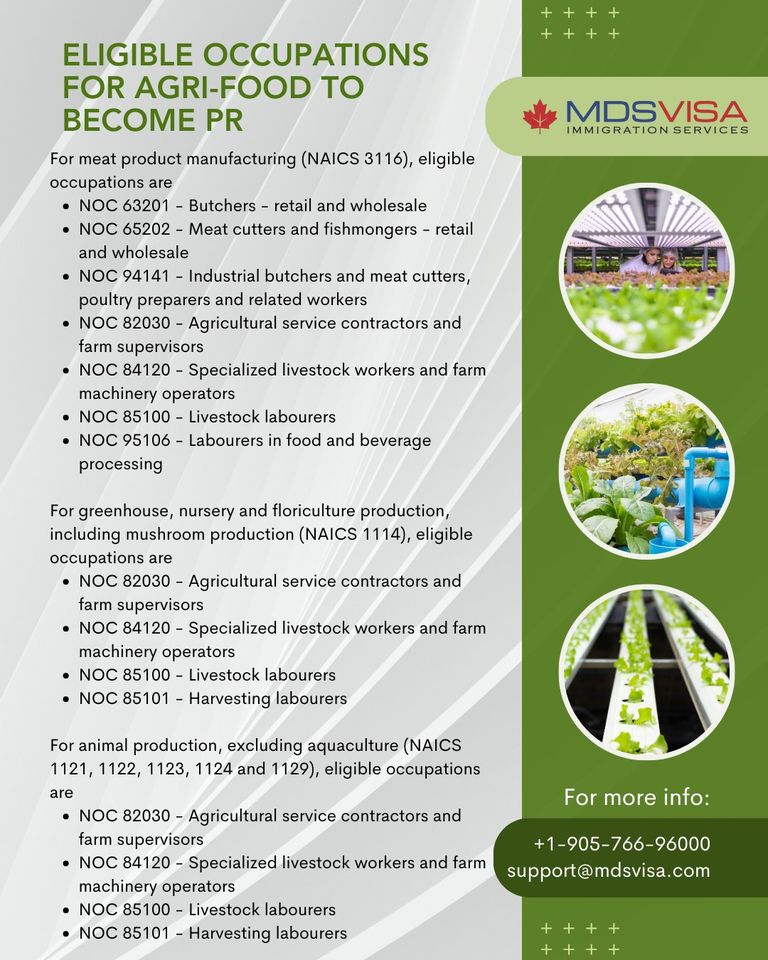If you are looking for a simple way to get permanent residency in Canada, you might want to consider the Agri-food Pilot program. This program is designed for people who have:
- Worked full-time in Canada for at least one year in the last three years through the Temporary Foreign Worker Program – LMIA
- A valid job offer in one of the eligible occupations listed below
- Minimum language proficiency of CLB 4 in English or French
- A high school diploma or equivalent, verified by an ECA
- Enough money to support yourself and your family, unless you are already working in Canada.


